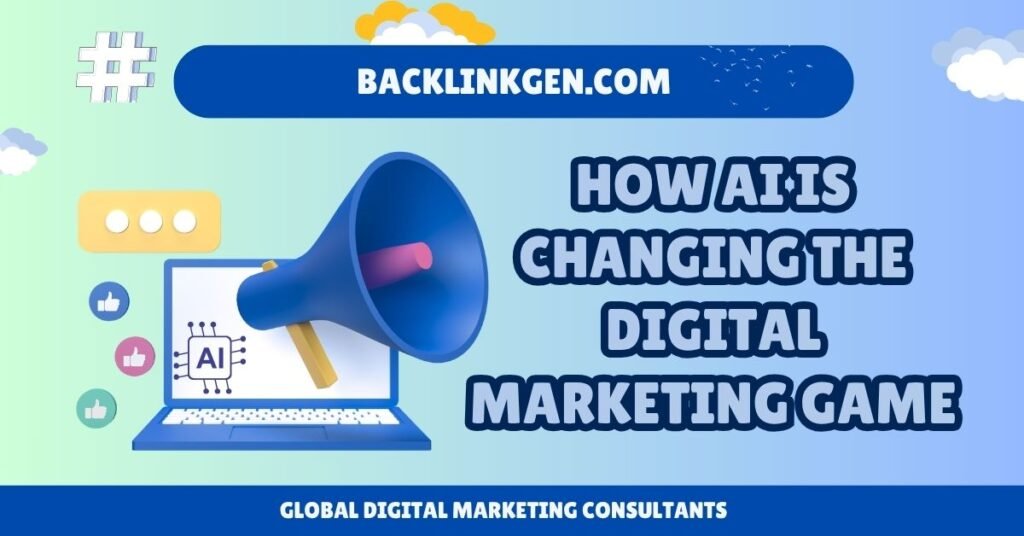By Amit, Digital Marketing Strategist
Let’s be honest: for years, “AI in marketing” was a buzzword thrown around to sound innovative. It was the future, always just out of reach. That future is now. Today, AI isn’t a feature of marketing tools; it is the tool.
After integrating AI across campaigns for IT consultancies and e-commerce brands, I’ve moved from skeptic to evangelist. The shift isn’t about replacing marketers; it’s about augmenting our intelligence and freeing us from guesswork. AI is fundamentally changing the game in five critical areas.
1. Hyper-Personalization at an Unprecedented Scale
The Old Way: We segmented audiences into broad groups like “Women, 25-40, interested in wellness.” Everyone in that segment received the same email.
The AI Shift: AI analyzes individual user behavior—every click, page view, past purchase, and email interaction—to create a unique profile for each customer. It then dynamically serves personalized content in real-time.
- Real-World Example: An e-commerce client uses AI to power their product recommendation engine. Instead of generic “You may also like” items, it now displays: “Customers who bought this specific battery and viewed that solar panel also purchased this charge controller.” The result? A 31% increase in average order value.
- The Tool: Platforms like Klaviyo and Braze use AI to automatically determine the best time, channel, and message for each subscriber.
“Segmentation is dead. Long live the segment of one.”
2. The Content Creation Revolution: Scaling Quality, Not Just Quantity
The Old Way: A content team would brainstorm, draft, edit, and optimize a single blog post over days.
The AI Shift: AI acts as a force multiplier for creative teams. It handles the heavy lifting of ideation and drafting, allowing human marketers to focus on strategy, refinement, and adding unique brand voice.
- My Workflow:
- Ideation: Use ChatGPT or Jasper to generate 50 blog topic ideas based on a core keyword and target audience.
- Outlining: Command the AI to create a detailed, SEO-optimized outline for the chosen topic.
- First Draft: Generate a comprehensive draft based on the outline.
- Human Touch: I step in to inject brand voice, add proprietary data, refine arguments, and ensure accuracy. The AI wrote the draft, but I wrote the final piece.
- Beyond Text: Tools like Canva AI and Midjourney are democratizing visual content creation, generating unique images and design variations in seconds.
The Result: My team’s content output has increased 3x without sacrificing quality, allowing us to dominate niche topics faster than ever.
3. Predictive Analytics: From Reactive to Proactive Strategy
The Old Way: We analyzed past campaign data (last month’s ROAS, last quarter’s conversion rates) to make educated guesses about the future.
The AI Shift: Machine learning models now analyze vast datasets to predict future outcomes. This allows us to be proactive, allocating budget to high-potential opportunities and mitigating risks before they happen.
- Application in Advertising: Google’s Performance Max and Meta’s Advantage+ campaigns are pure AI. We don’t manually choose placements or audiences. We feed the AI our creative assets and a conversion goal, and it relentlessly tests and learns to find converters across its entire network, often in ways a human would never predict.
- Application in Lead Scoring: AI can score leads not just on explicit actions (like downloading a guide) but on implicit signals (time on site, content consumption patterns), predicting which leads are most likely to become customers with stunning accuracy. This lets sales teams focus their energy with precision.
4. The New Search Frontier: Conversational AI and Semantic Understanding
The Old Way: SEO was about optimizing for keyword strings. We targeted “best laptop for graphic design” and created a page that exactly matched that query.
The AI Shift: With the rise of Google’s BERT and MUM models, and especially with conversational AI like ChatGPT, search is becoming conversational. Google is no longer just matching keywords; it’s understanding user intent and the semantic relationships between concepts.
- The Impact: Content must now comprehensively answer the question behind the query. For “best laptop for graphic design,” you also need to answer “how much RAM do I need,” “is a dedicated GPU necessary,” and “what are the best brands for color accuracy.”
- The Opportunity: Optimizing for Answer Engines is the new SEO. This means creating authoritative, in-depth content that establishes E-E-A-T (Experience, Expertise, Authoritativeness, Trustworthiness). Thin, keyword-stuffed content is being rendered completely obsolete.
5. Hyper-Efficient Operations and Customer Service
The Old Way: Customer service teams were bogged down with repetitive queries, and A/B testing was a slow, manual process.
The AI Shift: AI automates the mundane, creating massive operational efficiencies.
- AI-Powered Chatbots: Modern chatbots (powered by platforms like Intercom or Zapier) use Natural Language Processing (NLP) to understand complex customer questions and provide accurate, helpful answers 24/7. They qualify leads, handle common support issues, and free up human agents for complex problems.
- Automated A/B Testing: Tools like Mutiny and Omnitune use AI to automatically generate and test thousands of headline, CTA, and image variations on your website, identifying the highest-converting combination far faster than any human-led testing schedule could.
The Human Marketer’s New Role in an AI World
This isn’t the end of the marketer; it’s an evolution. Our value is shifting from execution to strategy and empathy.
- The Prompt Engineer: The ability to craft precise, effective instructions for AI tools is becoming a core marketing skill.
- The Strategic Editor: AI generates drafts, but a human provides the strategic context, brand voice, and emotional intelligence that AI lacks.
- The Data Interpreter: AI provides the data and predictions, but humans provide the business context and strategic decisions.
- The Ethical Guardian: We must oversee AI to ensure it avoids bias, maintains brand safety, and is used transparently and ethically.
“AI won’t steal your job. A marketer using AI will.”
How to Start Integrating AI Today
- Start Small: Pick one repetitive task. Use ChatGPT to draft email subject lines or social media captions.
- Leverage Built-in AI: Use the AI features already in your existing tools, like GrammarlyGO for writing or Canva AI for designs.
- Focus on Augmentation, Not Replacement: Use AI as your intern to handle the first draft, then step in as the manager to refine and perfect.
The game has changed. The businesses that will win are the ones that embrace AI not as a magic bullet, but as the most powerful assistant they’ve ever had.
About Amit: Amit is a digital marketing strategist who helps businesses leverage technology, from foundational no-code tools to cutting-edge AI, to build predictable and scalable growth engines.

